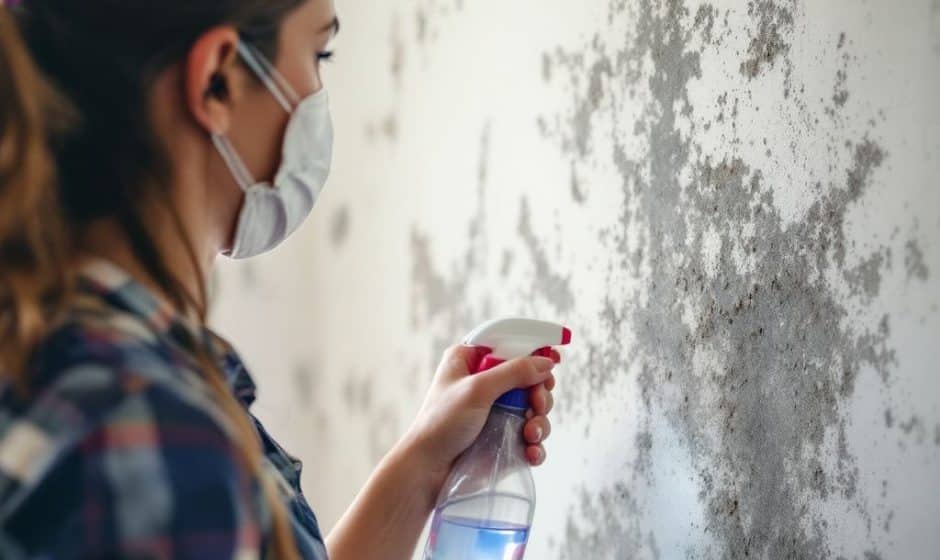Picture this: You’re trying to enjoy a peaceful day indoors when suddenly, you’re hit with an annoying sneeze attack. Your eyes itch, your nose is running, and you can’t quite put your finger on what’s stirring up such a storm inside your own home. Hold on—before blaming the cat or that new plant from last week, let’s talk about something that’s often sneaky and silent: mold. Yup, mold can be the culprit behind those annoying allergy symptoms. So, let’s dive into the nitty-gritty of mold allergies and how they connect with your environment.
Understanding Mold and Its Less Inviting Relatives
Mold isn’t just that pesky stuff on old bread. It’s a type of fungus that loves damp environments: think bathrooms, basements, and anywhere moisture sneaks in. These spores release invisible little soldiers into the air, and when we inhale them, some people’s immune systems throw a fit. Mold allergies once understood, can be managed, helping you reclaim your space.
**Key Mold Culprits:**
*Alternaria, Aspergillus, Cladosporium,* and *Penicillium*. Not the most welcoming names, right? These are just a few of the molds that love to shack up unnoticed until it’s too late.
The Mold-Allergy Connection
You might wonder, “Why am I allergic to mold when others waltz right past it?” It all ties back to your immune system’s quirks. Some bodies see mold spores and go, “Threat detected!” while others don’t give them a second glance. This immune system response includes releasing chemicals like histamines, which love to throw a melodic trio of sneezes, itches, and congestion.
Understanding how your body responds to allergens is crucial for managing them. Hormone regulation plays a subtle but crucial role here. The response can be heightened during stress or certain hormonal changes, making the body more reactive during specific periods.
Mold’s Environmental Hideouts

When it comes to allergens playing hide-and-seek, mold takes the top prize. It finds dark, moist nooks and crannies to make its home—a place many forget to clean or inspect regularly. Knowing where mold likes to hide can be your first defense in reducing allergens at home.
Common Mold Haunts
- Bathrooms: Guilty due to warmth and moisture. Check under sinks, around bathtubs, or near any leaky fixtures.
- Basements: They’re naturally damp. Keep an eye on old books or cardboard boxes and those nice collection of unused treasures.
- Kitchens: Love cooking? So does mold, especially near leaks under the sink or behind your cooker. And don’t forget about spelling disaster in weak ventilated areas.
- Attics and Crawlspaces: Out of sight, sometimes out of mind. With minimal disruption, check for changes after heavy rain or snow.
Mold Testing: Should You Really Do It?
Sometimes—when sneezing’s gotten out of hand—you think about the “M” word: mold testing. Not a bad idea. It feels like detective work turning up the tiniest offenders. You can hire professionals or take matters into your own gloves with a simple testing kit from stores.
Here’s the rundown: If the test is positive, consider calling in the mold-removal cavalry. If not, rest easy while still vigilant against those sneaky spores.
Hormone Regulation’s Understated Role
Here’s something interesting that often goes unnoticed in allergy discussions: hormone regulation. Now stick with me—it’s not that complex. Hormones like cortisol, the stress manager, decide how intense your reactions might be. During periods of stress or hormonal imbalance (ever moody lately?), allergies might feel like they’ve intensified.
So, whenever that reaction seems over the top, think about lifestyle factors too: Are you skipping meals, your morning routines, or losing sleep? Emotional and physical factors walk hand in hand with our body’s response to allergens.
Navigating Mold Allergy Relief
Now that we’ve got the sneaky mold’s profile and connection with your immune system, let’s talk about finding some relief. Mold allergy relief can often depend on small, gradual changes to your environment, habits, and potentially, lifestyle tweaks. The goal is to reduce exposure while supporting your immune system.
Step-by-step Mold Allergy Relief Plan

- Keep It Dry: Ensure your home remains a no-vacancy zone for dampness. This means timely addressing of leaks and using dehumidifiers, especially in soupy air seasons.
- Improve Ventilation: This impresses even the staunchest allergy critics. Install fans, use exhaust systems, or just kick windows wide open whenever feasible. Trust me, fresh air does wonders.
- Clean Up Routine: Think of cleaning as your best defense. Regular vacuuming, wiping down surfaces, and everything cleaning fends off mold’s living spaces.
- Watch For Household Disruptors: Testing for household disruptors that might be quietly de-regulating your hormone homeostasis can be key — think diet changes, stress management, and ensuring adequate rest.
- 5. **Prevent it in Personal Spaces: Remember, personal belongings aren’t spared from mold. Think nail cutters, toothbrush holders, or shower caddies. They too need care — an occasional clean and air out makes a significant change.
- 6. **Consider Air Purifiers: For those committed to going pro — air purifiers can shave off those airborne offenders beautifully.
Comparing DIY Mold Removal Versus Professional Cleanup
So, you’re ready to tackle mold head-on? Awesome! Let’s chat a bit about whether to roll up those sleeves or pick up the phone.
DIY Mold Cleanup
Pros:
- Budget-Friendly: Doesn’t stretch with convenience, but it saves costs.
- Immediate Action: You can start scrubbing as soon as you please.
Cons:

- Requires Know-how: You’ve got to know which cleaning solutions are safe and effective.
- Limited in Effectiveness: Without professional-grade tools, deeply embedded spores might survive.
Professional Mold Cleanup
Pros:
- Thorough and Comprehensive: These folks have special equipment to reach and really scrub out that mold.
- Peace of Mind: Sleep easy knowing it’s all been tackled by experienced hands.
Cons:
- Cost: Higher upfront cost given the expertise and logistic implications.
- Scheduling Hiccup: Despite being careful honchos, pride goes slightly out in scheduling.
Key Takeaways and A Gentle Reminder
Let’s circle back—What mold doesn’t love is what you strive for: less moisture, better air circulation, good cleaning habits. Keep your eyes open to how your environment makes you feel. Constantly transparent with scenarios, molding the hinge of thriving at home better understanding of allergens.
Remember, maintaining consistent moisture levels and ensuring adequate airflows reduce mold growth. Recognize your body’s signals honestly if allergies flare—is it stress affecting hormone regulation, or an overlooked spot in your haulhouse chores?
Whenever winter swashbuckler tales don a steaming mug, or bracing showers in spring sing willingly, you’ll know that foyer surprises are well-hidden behind now-brilliant mold control techniques. Act a little on what you learn; engage intuitively with your living spaces—confident it refreshingly nudges dormant allergens back where they belong.
Incorporate knowledge curiously and embrace your mold-exemption on any new decor aspirations success, happily evident by openness.
Frequently Asked Questions
What causes a hormonal imbalance?
A hormonal imbalance can be caused by natural changes or stages in your life, including puberty, pregnancy, perimenopause, and menopause. Additionally, hormone levels can dramatically decrease after a partial or full hysterectomy. Other causes include tumors, adenomas, and damage or injury to endocrine glands, as well as autoimmune diseases[1][3][5).
What are the signs and symptoms of a hormonal imbalance?
The signs and symptoms of a hormonal imbalance can vary widely but may include irritability and fatigue, mood swings and depression, skin dryness and loss of elasticity, water retention and weight gain, osteoporosis and joint pain, less interest in sex, insomnia and other sleep disorders, and memory issues and difficulty concentrating[1][3][5).
How does hormone replacement therapy help with hormonal imbalances?
Hormone replacement therapy helps by restoring stable hormone levels, leading to improved sleep, increased energy, enhanced memory, better concentration, elevated mood with fewer mood swings, smoother and more hydrated skin, increased interest in sex, better weight regulation, and protection of joints and bones[1][3).
What types of hormone replacement therapy are available?
There are several types of hormone replacement therapy, including systemic hormone therapy (in pill form, patches, rings, gel, cream, or spray), low-dose vaginal products (cream, tablet, or ring forms), and bio-identical hormone replacement therapy, which is structurally identical to human hormones and may have fewer side effects than traditional hormone replacement therapy[1][3).
References



